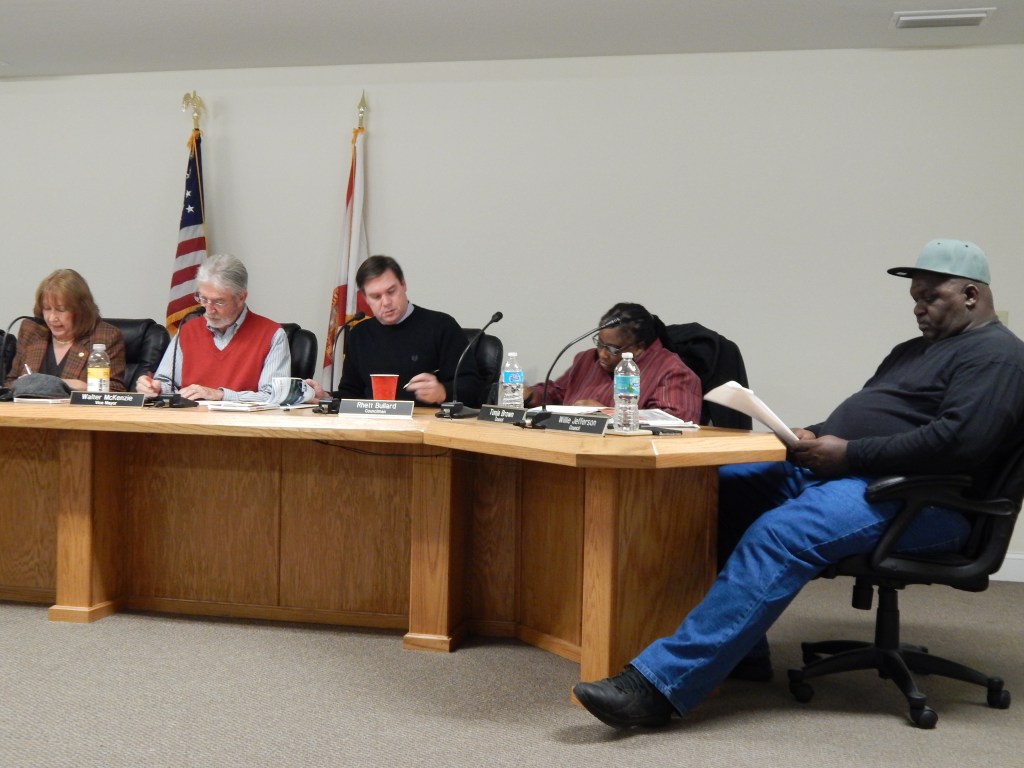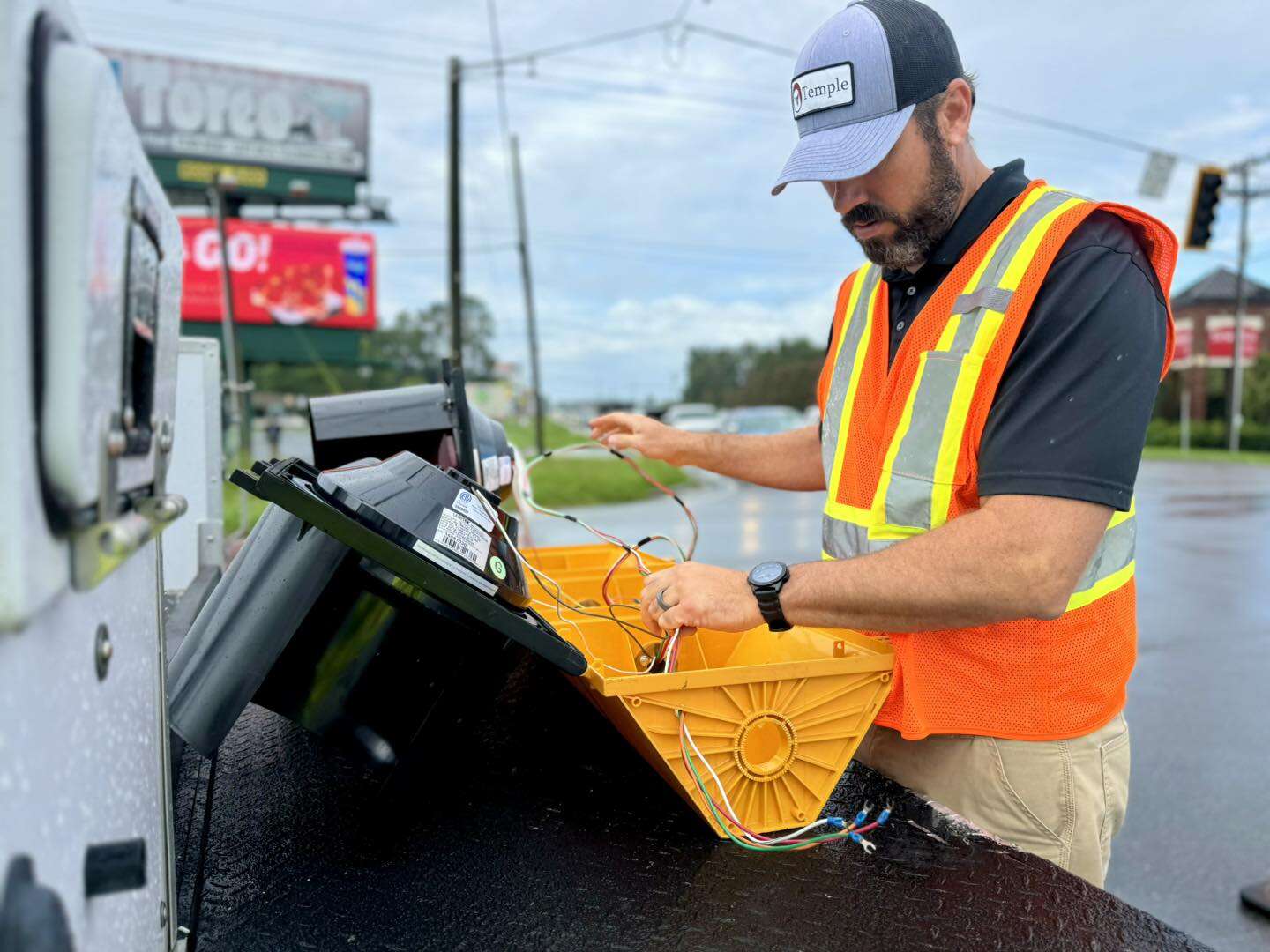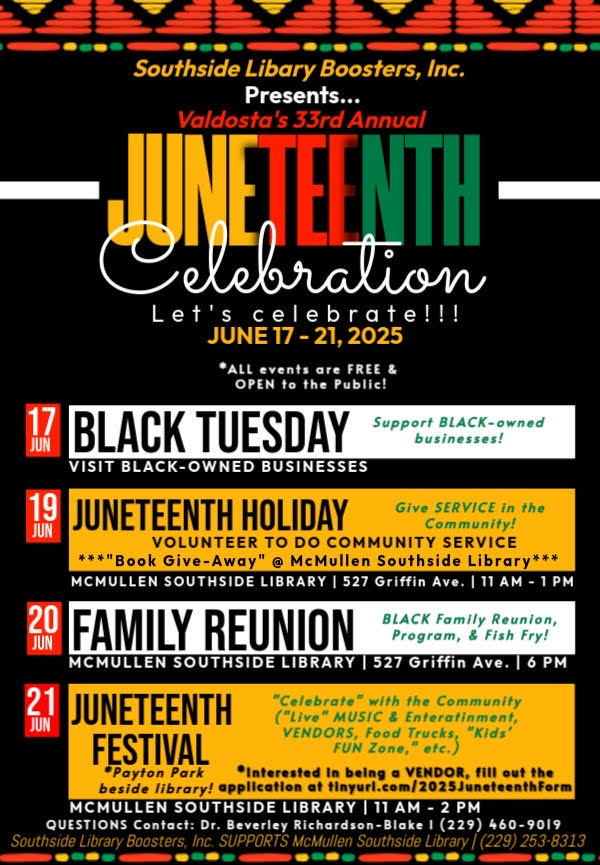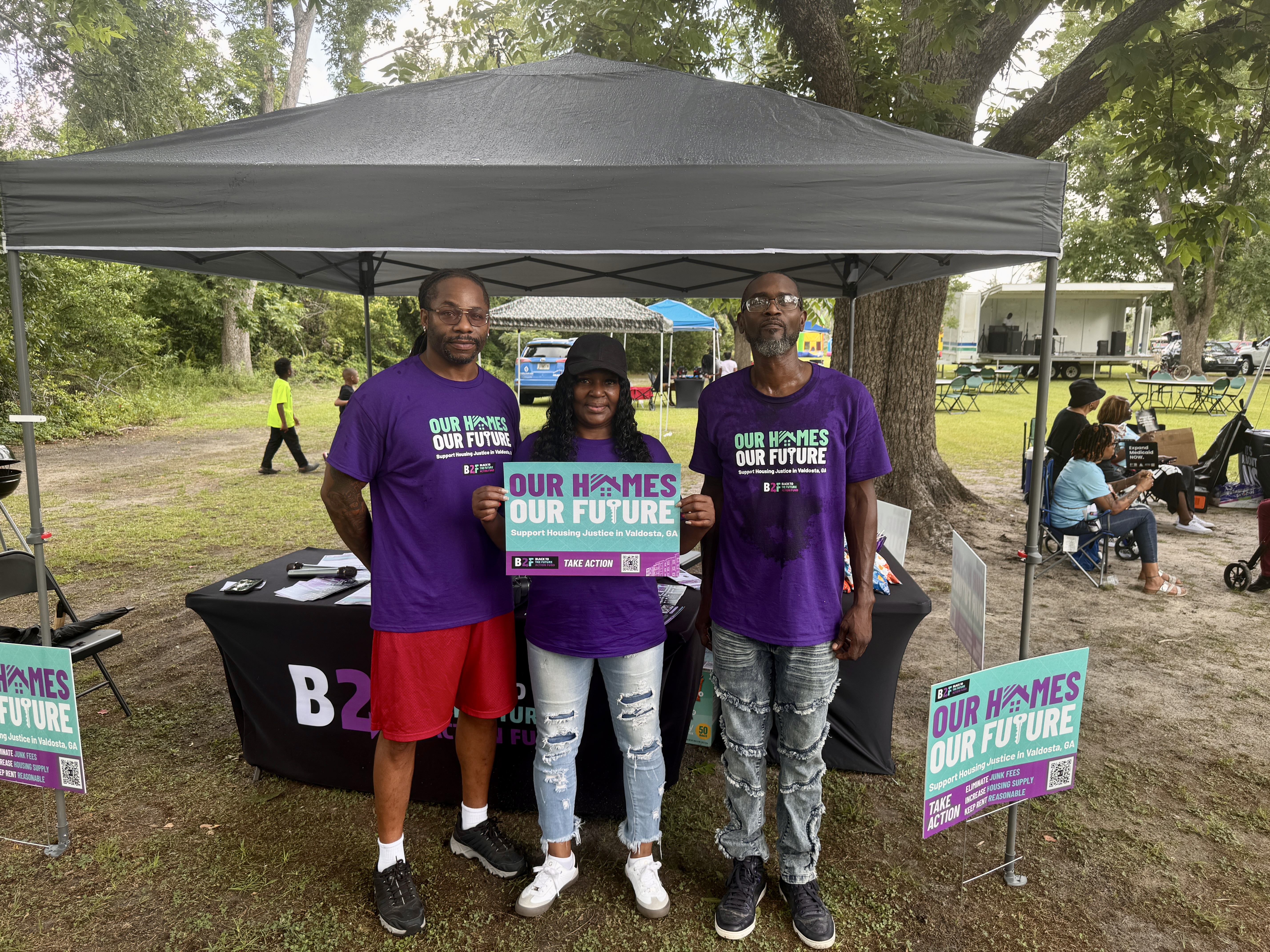Hamilton County: Carver School takes center stage; Asbestos removal priority
Published 8:57 am Monday, December 15, 2014

- White Springs Town Council members (L-R) Helen Miller, Walter McKenzie, Rhett Bullard, Tonja Brown and Willie Jefferson.
The old Carver School property in White Springs and what to do with it has been the subject of a lot of discussion over the years – since 1997, in fact – and especially in recent months. It came to the forefront again at a Dec. 9 workshop and carried over into the town council meeting later that same evening with a final decision made by council to hold a community meeting on the subject.
The building has been deemed a safety hazard due to asbestos in the building, which, for a variety of reasons over the years, has never been dealt with. The building was turned over to the town of White Springs in 2010 by the Hamilton County School Board with a stipulation that something would be done with it within a five-year period. The hold-up, however, has been a lack of funds to properly dispose of the asbestos, and mixed feelings from town residents as to whether or not the building should be demolished or rehabilitated, as it holds historical value for many in the community.
It was noted that an asbestos study was done years ago, but the report is nowhere to be found, so the process must be started all over again.
Students from the University of Florida have been working on design concepts for various projects in White Springs over the past few years and the Carver School site has been one of their projects. Recently, those UF students came up with 17 different design models that were presented to town officials. Some of the designs were inspired by the town’s annual May Day event, which draws thousands to the area each year, according to White Springs Mayor Helen Miller.
With input from some of the locals like Kenny Hutcherson and Shirley Marshall, representatives from Brothers United and former resident Doug Udell, the students came up with a plan to put an open-air, mobile-type pavilion at the Carver School site. Ideally, what the town and residents really want is to build a new hurricane proof shelter/community center at the site, but the costs for that would run in the millions of dollars and are cost prohibitive at the present time. There is also the matter of lack of funds to maintain such a building, as the town’s budget is already stretched to the max just handling current town business.
Meanwhile, a mobile, open-air pavilion is the next best thing, which could be used during the May Day event, as well as other neighborhood events and birthday parties, which, if you live in White Springs, you know those parties tend to draw a large number of family members and guests.
The reason for building the pavilion on skids, suggested by the UF students’ professor, is to allow for changes down the road when the old Carver School site decision is made (demolish or rehab). Once a decision is made, then the pavilion can be moved to a different location at the 5-acre site, if necessary.
Town Manager Bill Lawrence has been diligently working to find a solution to the asbestos abatement at the site. After much frustration and seemingly no one willing to offer any suggestions, he was finally put in touch with Engineer Frank Darabi by Doug Udell. Udell had attended the UF student presentations meeting and afterwards provided both Lawrence and the UF team with several contacts to move the project forward.
Lawrence said by phone on Thursday, Dec. 11, that he found a company in Jacksonville that will be coming out for free to evaluate the building and give the town a price for the cost of testing. Even after obtaining that cost, the next steps will still be up in the air. Lawrence did say, however, that it is his objective to get something done as quickly as possible, since this matter has been dragging on for so many years.
Miller interjected that Udell and his son gave a generous $500 donation toward the project.
The UF students want to begin the pavilion project in January and have it completed by March or April, Miller said, however, donations are needed to purchase the lumber.
There was much back and forth discussion between council members as to what to do first, i.e. where to focus their efforts first and foremost; whether building a new pavilion, getting the asbestos removed, or proceeding with both.
Lawrence said in his experience, the cost to test for asbestos can run from $8-10,000, plus another $15-25,000 for removal.
‘That’s a ballpark figure,” Lawrence said. “I really don’t know, but I had a similar situation with an old school in Lincoln, Maine and that’s about how much it cost.”
He said he had hopes that Darabi could point him in the right direction as to how to possibly obtain grant funds for the asbestos removal.
Vice Mayor Walter McKenzie said, “Our intention is to get this done. With a little bit of luck and a lot of hard work, we will get it done.”
Councilman Willie Jefferson said as far as he could recollect, when the asbestos study was done years ago, it was determined that it only existed in one portion of the cafeteria.
Resident Bernard Williams said when the school board owned the building, he and a local group tried pursuing a $50,000 historic restoration and preservation grant for the Carver site back in 1997. However, the DEP got involved with the asbestos issue and closed the school building. After that, nothing was ever followed through because there were conflicts between residents as to what they wanted done with the building.
Miller suggested calling a community meeting to get input from residents.
“All we want is something nice for the kids to kind of have something to do,” said Jefferson. “And if we have a hurricane come through, that people can go and seek shelter.”
Miller then summarized the dilemma, stating that a storm shelter/multi-purpose center would entail a large sum of money that the town would have to come up with for a matching grant. If they went the route of the historic preservation grant, she said, the building would likely not qualify as a storm shelter, even with massive restoration.
“It would not meet code for a storm shelter,” she said.
The matter was brought up again at the ensuing council meeting with even more discussion. In the end, after a motion from Jefferson, the council voted to schedule a community input workshop, most likely in February, at which time they hope to have dollar figures on the costs of asbestos testing and removal. The workshop will be widely publicized so that all community members are aware and can plan on attending.





